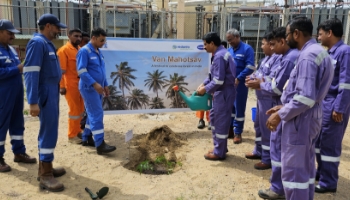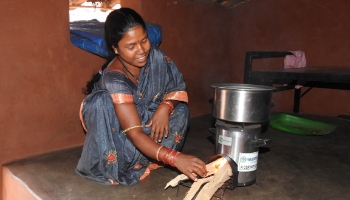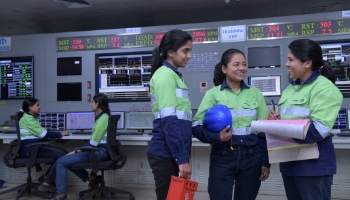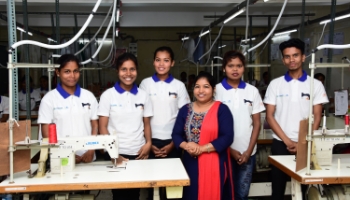Jan 12, 2024 . Read 5 min
How we can secure minerals for a sustainable future
Priya Agarwal Hebbar, Chairperson, HZL & Non-Executive Director, Vedanta Limited
The planet is on track to mark a climatic milestone in its meteorological history. Experts tell us that 2023 was the warmest year on record. Climate change is now an undeniable reality. Companies and governments must respond by accelerating their decarbonization efforts more urgently than ever.
Without rapid carbon dioxide emission reductions, the world only has a 50% chance of locking in the minimum 1.5°C of warming before 2030, according to a new study by Imperial College London.
The unprecedented amounts of minerals required for green electrification and clean technologies necessitate rapidly scaling the mining industry's output of critical minerals. The International Energy Agency (IEA), for example, estimates that electric vehicles (EV) consume up to 173kg more minerals (such as zinc, nickel and copper) than petrol cars. This is due to their heavy batteries.
State funding and support for sustainability initiatives have contributed to this increase. Schemes, such as India's Faster Adoption and Manufacture of Hybrid and Electric Vehicles, have encouraged electric vehicle (EV) and hybrid purchases by providing financial support to end consumers. Because of this, demand for green solutions - such as EV - is only going to increase. Global EV sales skyrocketed by 60% in 2022 alone.
Greening metals
Green solutions need huge amounts of green metals. Taking into account climate tech more broadly, including wind and solar technology, the IEA estimates that demand for many critical metals is likely to increase by 400% by 2040. More specifically, the net zero scenario will require 9.7 million Mt of new copper supply over the next decade. Similarly, the demand for aluminium is predicted to increase to between 12.8 Mt and 16 Mt annually by 2040. This is a significant departure from the current level of the mining industry's output of critical minerals.
The reality is that the current projected demand for critical metals fails to meet supply. To hit targets for a 1.5°C pathway, copper and nickel demand need to exceed supply by five to eight million and 700,000 to one million metric tons, respectively, according to consultancy giant, McKinsey.
The impact of regulations
Despite the shared challenge of global warming, the regulatory landscape is dominated by regionalization and protectionism, which compounds the issue of a projected supply shortage, given the current mining levels. This is seen through examples such as the US's Inflation Reduction Act, Australia's Critical Minerals Strategy and the EU's Green Deal Industrial Plan.
These are just a few of the examples of the almost 200 policies and regulations identified by the IEA across the globe, with over 100 of these enacted in the past few years. Some of these have included restrictions on the import and export of critical minerals and the number of these export bans has increased fivefold since 2009. The rapid increase in demand for critical metals requires careful planning and global discussion to manage supply. However, this appears incompatible with the urgency of net zero. This apparent contradiction highlights the need for cooperation between industry actors, mining companies and states.
India remains committed to the goal of creating "One Earth, One Family, One Future." Despite being home to 17% of the global population, India produces less than 4% of the world's emissions. Its economy has set the standard for economic growth and development without the accompanied increase in emissions usually experienced by other advanced economies. This standard can only be maintained through a transformation of our energy resources, which can only be achieved with a sustainable supply of critical minerals.
Making mining sustainable
The solution to protecting the atmosphere is, therefore, underground. To sustainably deliver this solution, the mining process itself must be swiftly decarbonized. And, all stakeholders must be considered if we are to achieve what UN Secretary-General António Guterres has called an energy transition that is "sustainable, fair and just."
Indeed, the importance of these materials does not justify compromising on environmental, social and governance (ESG) best practices, but rather underlines their significance. It is the mining industry’s responsibility to ensure it operates to a high standard of environmental protection and rapidly decarbonizes. Governments and companies must work together to respect and protect local populations’ needs and rights to ensure that the green transition is equitable.
Innovation and thinking creatively to tackle complex issues are fundamentally important. The Green Credit initiative, launched by Prime Minister Modi at the COP28 summit, is a prime example of this. It demonstrates the importance of public/private partnerships, not just for increasing the mining operations, but also for embedding sustainable thinking across the whole value and supply chain.
The industry must focus on delivering these metals in a way that prioritizes sustainability and ensures an efficient and effective transition, for the benefit of our planet and future generations.
This blog first appeared on the World Economic Forum's website on January 2, 2024 here.










